Eastern United States
The Eastern United States, commonly referred to as the American East or simply the East, is the region of the United States lying to the east of the Mississippi River.[1][2] In some cases the term may refer to a smaller area.[3]
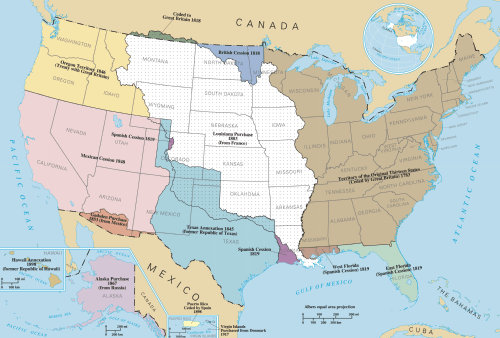
In 2011 the 28 states east of the Mississippi (in addition to Washington, D.C. but not including the small portions of Louisiana and Minnesota east of the river) had an estimated population of 179,948,346 or 58.28% of the total U.S. population of 308,745,358 (excluding Puerto Rico).
Southern United States
The Southern United States is a large region of the United States that is sometimes considered to overlap with the Eastern United States, especially in the cases of Delaware, Maryland, Kentucky, Tennessee, Virginia, West Virginia, North Carolina, South Carolina, Georgia, Florida, Alabama, and Mississippi.
Its unique cultural and historic heritage includes the following aspects:
- Native Americans
- early European settlements of English, Scots-Irish, Scottish and German heritage
- importation of hundreds of thousands of enslaved Africans
- growth of a large proportion of African Americans in the population
- reliance on slave labor
- legacy of the Confederacy after the American Civil War.
These led to "the South" developing distinctive customs, literature, musical styles, and varied cuisines, that have profoundly shaped traditional American culture.
Many aspects of the South's culture remain deeply rooted in the American Civil War.
In the last few decades, the Southern US has been attracting domestic and international migrants, and the American South is among the fastest-growing areas in the United States.
New England
New England is a region of the United States located in the northeastern corner of the country, bounded by the Atlantic Ocean, Canada and the state of New York, consisting of the modern states of Maine, New Hampshire, Vermont, Massachusetts, Rhode Island, and Connecticut.
In one of the earliest English settlements in the New World, English Pilgrims from Europe first settled in New England in 1620, in the colony of Plymouth. In the late 18th century, the New England colonies would be among the first North American British colonies to demonstrate ambitions of independence from the British Crown, although they would later threaten secession over the War of 1812 between the United States and Britain.
New England produced the first examples of American literature and philosophy and was home to the beginnings of free public education. In the 19th century, it played a prominent role in the movement to abolish slavery in the United States. It was the first region of the United States to be transformed by the Industrial Revolution.
Historically an area in which parts were strongly Republican, it is now a region with one of the highest levels of support for the Democratic Party in the United States, with the majority of voters in every state voting for the Democrats in the 1992, 1996, 2004, 2008, 2012 and 2016 Presidential elections, and every state but New Hampshire voting for Al Gore in 2000.
The Midwest
The Midwestern United States (in the U.S. generally referred to as the Midwest) is one of the four geographic regions within the United States that are recognized by the United States Census Bureau.
Seven states in the central and inland northeastern US, traditionally considered to be part of the Midwest, can also be classified as being part of the Eastern United States: Illinois, Indiana, Michigan, Ohio, and Wisconsin. A 2006 Census Bureau estimate put the population at 66,217,736. The United States Census Bureau divides this region into the East North Central States (essentially the Great Lakes States) and the West North Central States.
Chicago is the largest city in the region, followed by Indianapolis and Columbus. Chicago has the largest metropolitan statistical area, followed by Detroit, and Minneapolis – Saint Paul. Sault Ste. Marie, Michigan is the oldest city in the region, having been founded by French missionaries and explorers in 1668.
The term Midwest has been in common use for over 100 years. Another term sometimes applied to the same general region is "the heartland". Other designations for the region have fallen into disuse, such as the "Northwest" or "Old Northwest" (from "Northwest Territory") and "Mid-America". Since the book Middletown appeared in 1929, sociologists have often used Midwestern cities (and the Midwest generally) as "typical" of the entire nation. The region has a higher employment-to-population ratio (the percentage of employed people at least 16 years old) than the Northeast, the West, the South, or the Sun Belt states.
Four of the states associated with the Midwestern United States (Kansas, Nebraska, North Dakota, and South Dakota) are also traditionally referred to as belonging in part to the Great Plains region.
Major population centers
The following is a list of the 24 largest cities in the East by population:
 New York City
New York City
population: 8,622,698 Chicago
Chicago
population: 2,695,598 Philadelphia
Philadelphia
population: 1,567,827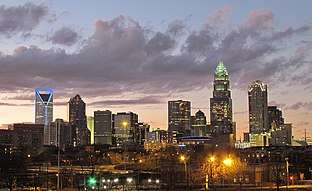 Charlotte
Charlotte
population: 859,035.jpg) Jacksonville
Jacksonville
population: 821,784- Indianapolis
population: 820,445 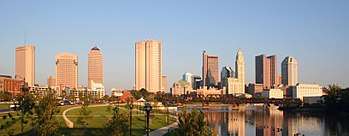 Columbus
Columbus
population: 787,033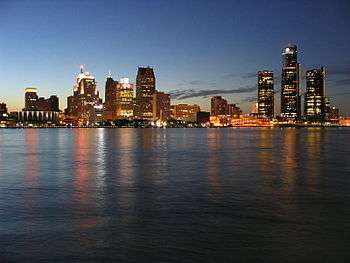 Detroit
Detroit
population: 713,777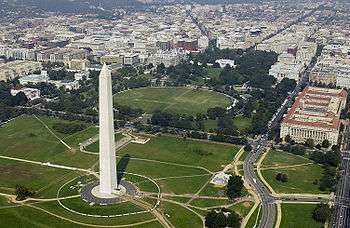 Washington, D.C.
Washington, D.C.
population: 703,608 Boston
Boston
population: 667,137 Memphis
Memphis
population: 646,889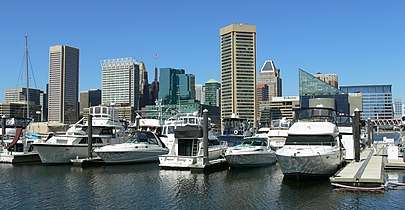 Baltimore
Baltimore
population: 611,648 Nashville
Nashville
population: 601,222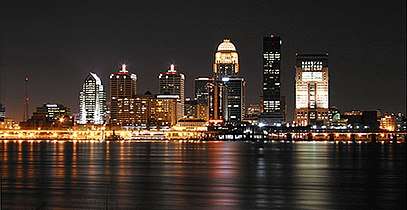 Louisville
Louisville
population: 597,337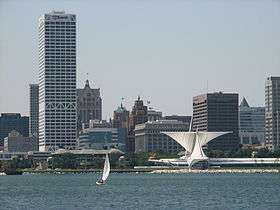 Milwaukee
Milwaukee
population: 594,833 Miami
Miami
population: 453,579 Virginia Beach
Virginia Beach
population: 437,994 Atlanta
Atlanta
population: 420,003 Raleigh
Raleigh
population: 403,892.jpg) Cleveland
Cleveland
population: 396,815 Tampa
Tampa
population: 335,709 Pittsburgh
Pittsburgh
population: 305,704 Cincinnati
Cincinnati
population: 296,943- Lexington
population: 295,803
References
- "Eastern U.S. states". TheFreeDictionary.com.
- Whitaker, John O. (1998). Mammals of the Eastern United States. Hamilton, William J. (William John), Jr., 1902-1990. (3rd ed.). Ithaca: Comstock Pub. Associates. p. 4. ISBN 0-8014-3475-0. OCLC 38438640.
eastern United States—that part of the nation east of the Mississippi
- Quandt, Sara A. (2009). Latino Farmworkers in the Eastern United States : Health, Safety and Justice. Springer-Verlag New York. p. 18. ISBN 978-0-387-88347-2. OCLC 901254381.
The eastern US considered in this volume includes 22 states. This includes the southeastern states bordering the Gulf of Mexico and Atlantic Ocean (Florida, Georgia, Alabama, Mississippi, South Carolina, North Carolina, and Virginia), the Mid-Atlantic states (Maryland, Pennsylvania, Delaware, and New Jersey), interior states (Tennessee, Kentucky, West Virginia, and Ohio), and New England (New York, Massachusetts, Connecticut, Rhode Island, New Hampshire, Vermont, and Maine).
External links
| Wikimedia Commons has media related to Eastern United States. |